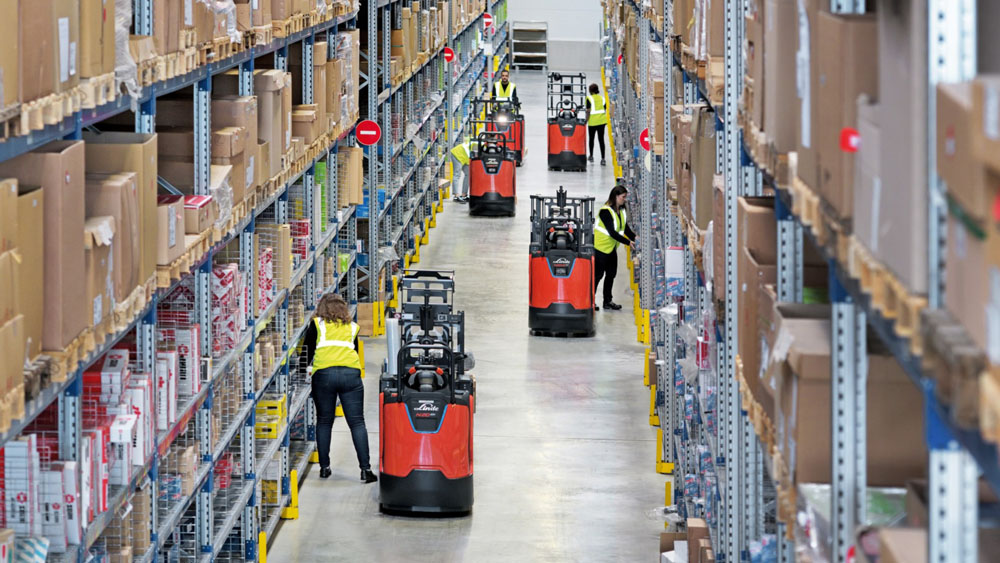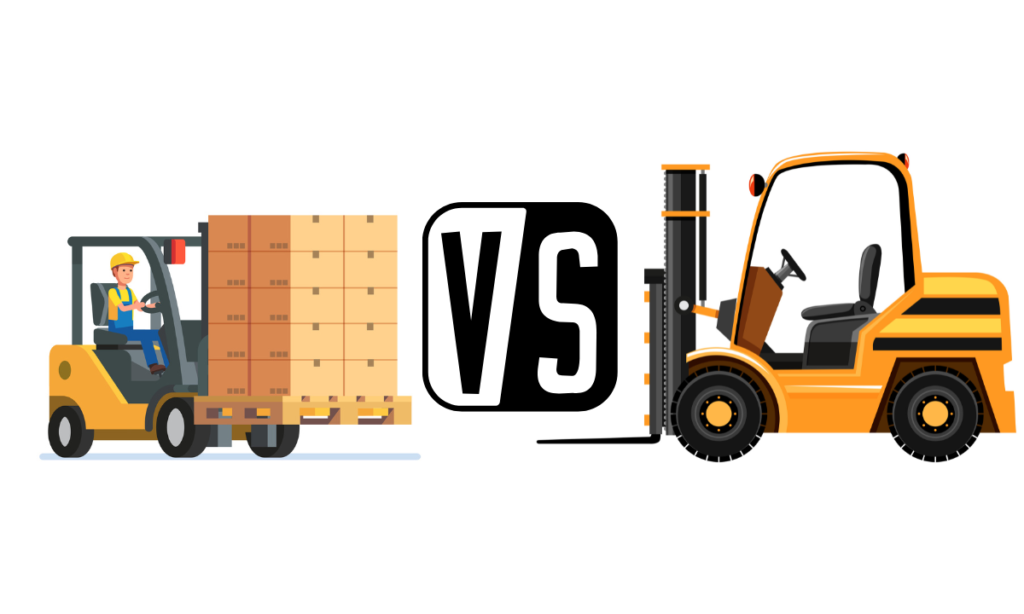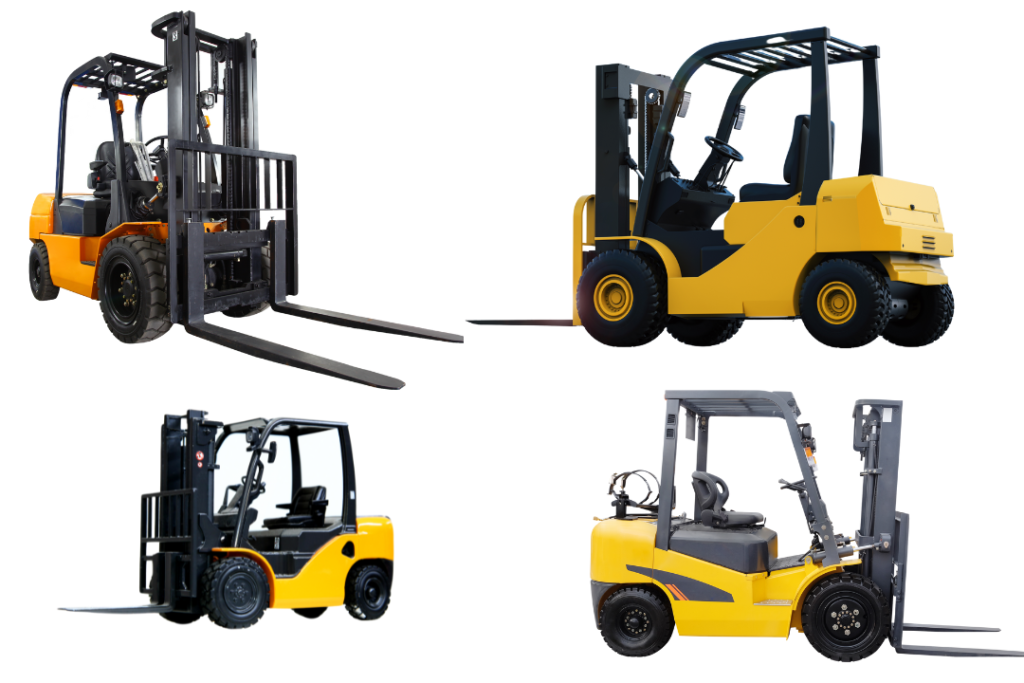Choosing the right forklift or order picking equipment can be overwhelming given the wide range of options. Our guide on Five Common Types of Warehouse Pickers & Forklifts delves into the benefits, capacities, reach heights, and training needs of each type. This comprehensive overview will assist you in selecting the perfect equipment to meet your warehouse needs effectively.
1. Warehouse Forklift
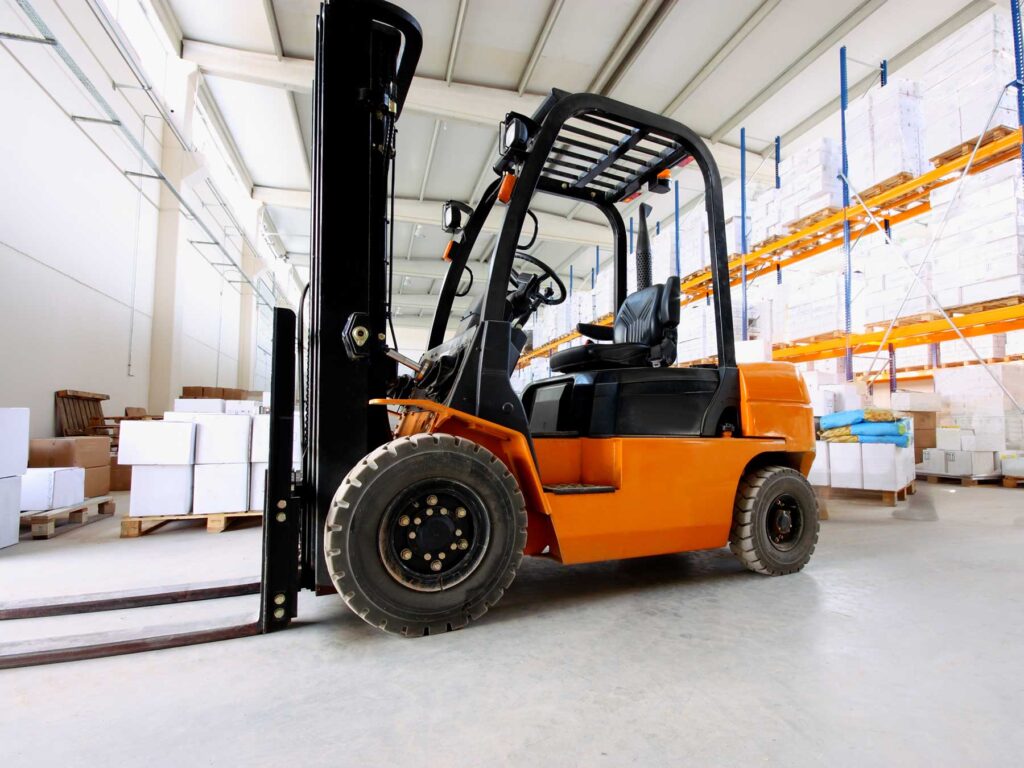
Quick Facts
- Primary Use: Often used in large facilities to move high volumes of inventory.
- Capacity: Handles 5,000 lb on average, with some models managing up to 20,000 lb.
- Subtypes: Includes side loaders and counterbalance forklifts.
- Training: Forklift licenses required by OSHA for all operators.
How They’re Used
Warehouse forklifts, often referred to as cherry picker or order picker forklifts, are highly maneuverable machines used in large facilities for moving high volumes of inventory over short distances. They are also utilized on loading docks to unload items from delivery trucks.
Load Size & Type
These forklifts are designed to efficiently move pallets of materials and goods, handling up to 5,000 lb on average, with some heavy-duty models managing over 20,000 lb.
Required Training
All forklift operators must be certified, complying with OSHA regulations, to minimize workplace injuries due to unsafe operation.
2. Pallet Jack
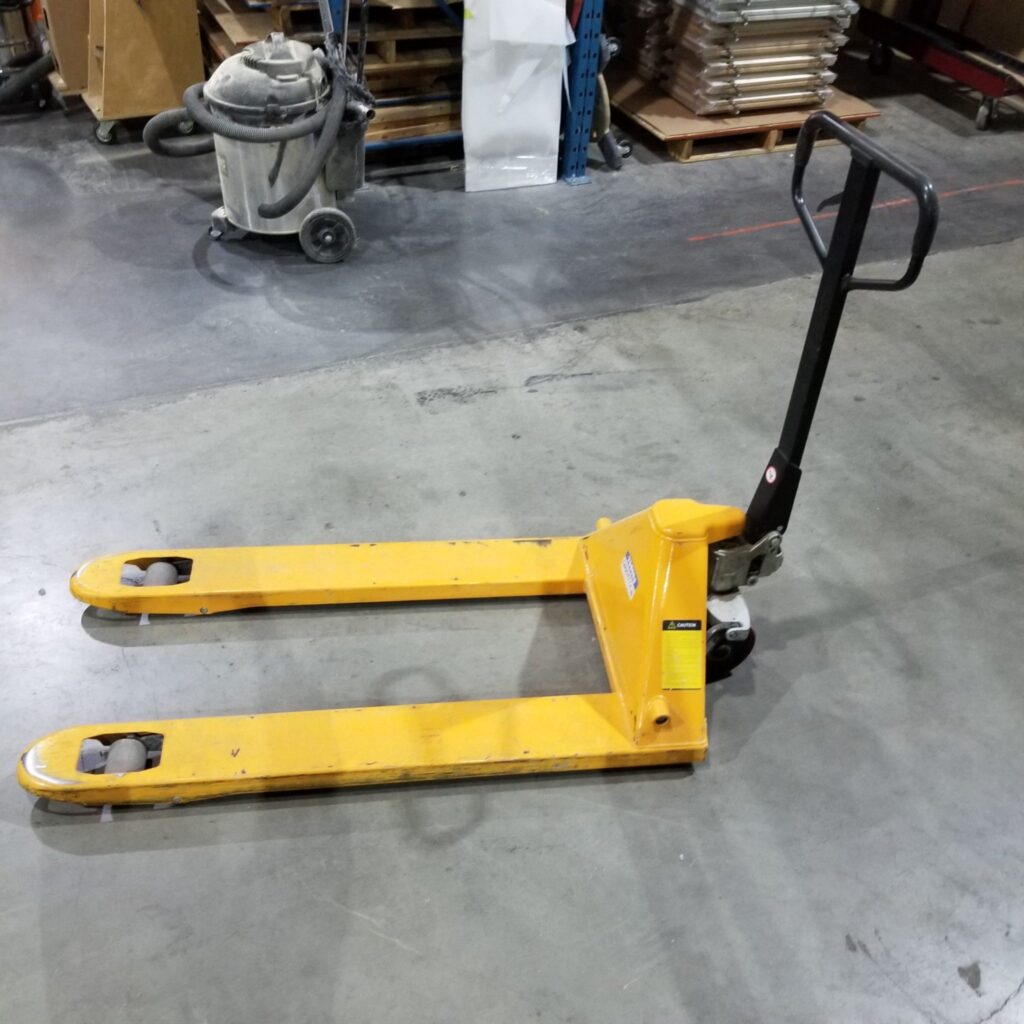
Quick Facts
- Primary Use: Transports palletized loads over long distances.
- Capacity: Handles 5,000 lb on average, with some models lifting up to 8,000 lb.
- Training: Required by OSHA for both manual and electric pallet jacks.
How They’re Used
Pallet jacks, or pump trucks, are used to move palletized loads, especially over long distances within a warehouse. They can fit into tight spaces more easily than standard forklifts and are available in both manual and electric models.
Load Size & Type
Pallet jacks typically feature two forks and are designed exclusively for transporting pallets. They can handle loads up to 5,000 lb on average, with some models capable of lifting up to 8,000 lb.
Required Training
OSHA requires training for all pallet jack operators, whether they use manual or electric models, with certifications valid for three years.
Learn More: Understanding the Purpose of a Forklift Load Backrest
3. Walkie Stacker
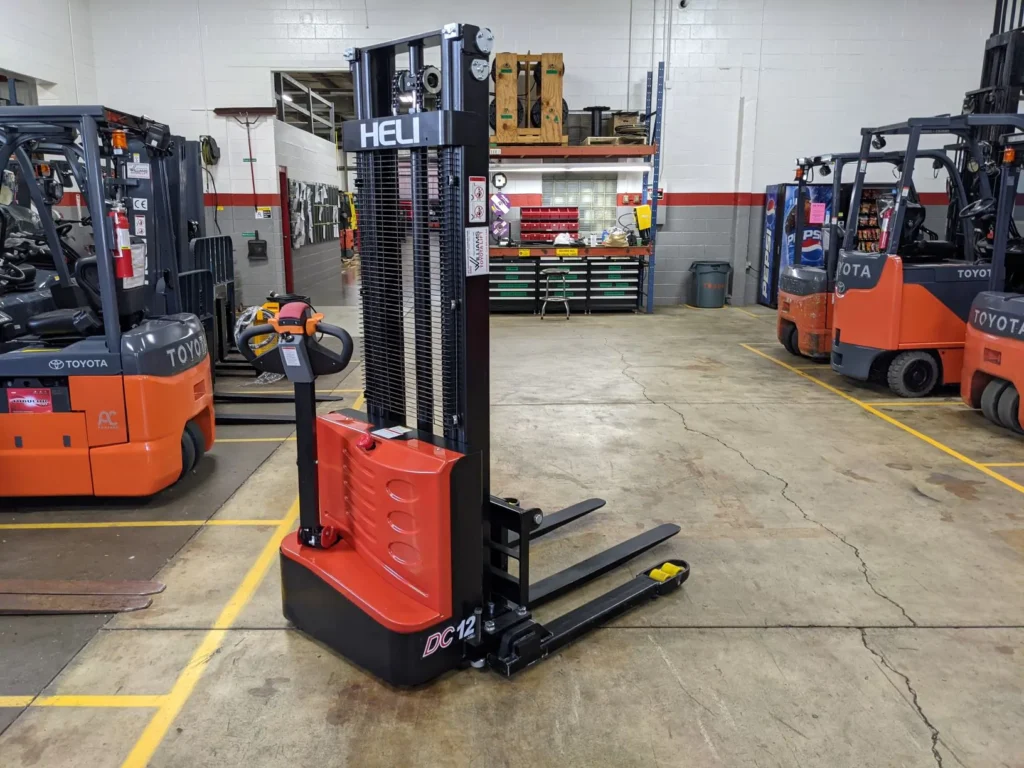
Quick Facts
- Primary Use: Combines the compactness of a pallet jack with the reach of a forklift.
- Capacity: Handles between 2,000 and 3,000 lb on average, with some models lifting up to 4,000 lb.
- Training: Required by OSHA for compliance.
How They’re Used
Walkie stackers, also known as walk-behind forklifts, lack cabs and must be steered by a warehouse worker walking behind them. They are more compact than forklifts but offer less speed and maneuverability.
Load Size & Type
These machines are ideal for transporting lighter loads over short distances, such as in storerooms or small warehouses. They handle between 2,000 and 3,000 lb on average, with some models lifting up to 4,000 lb.
Required Training
Operators must be trained and certified to use walkie stackers, similar to indoor forklifts, to meet OSHA compliance.
4. Order Picker
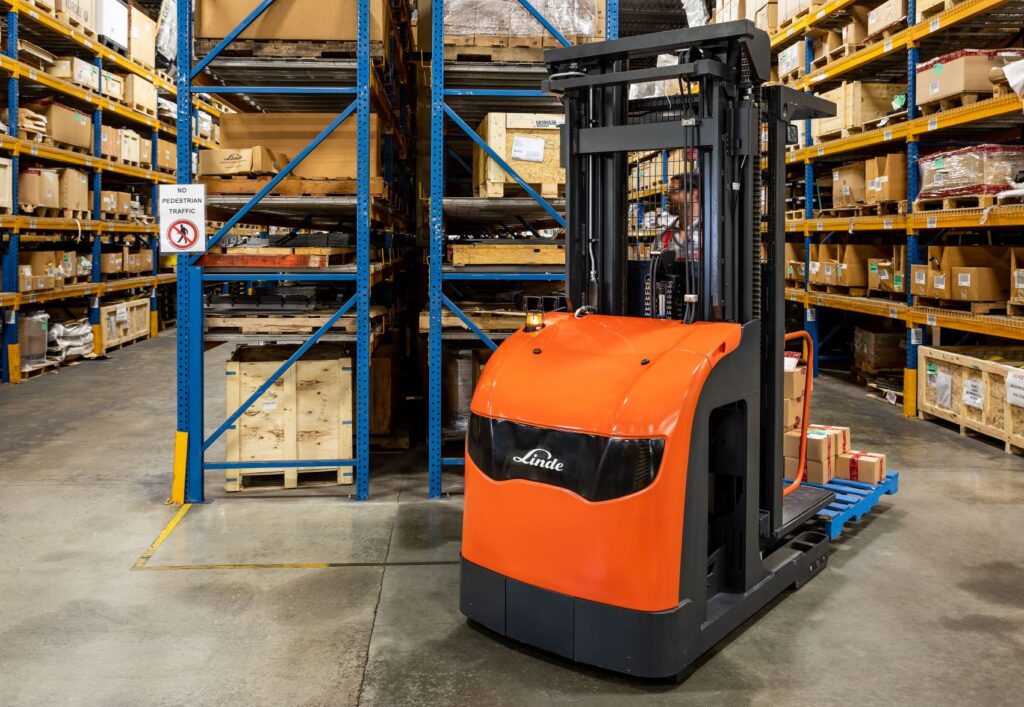
Quick Facts
- Primary Use: Designed for piece picking rather than full pallet handling.
- Capacity: Ranges from several hundred pounds to 3,000 lb.
- Training: Required by OSHA for all operators.
How They’re Used
Order pickers are specialized machines for more efficient piece picking and palletless handling. They are designed for narrow aisles and small on-demand warehouses, with some models extending up to 32 ft.
Learn More: The 10 Biggest Forklifts in the World: Specifications & Features
Load Size & Type
Operators ride on an order picker, lifting them to the height of storage racks for item picking. Capacities vary from several hundred pounds to 3,000 lb.
Required Training
Order picker operators must obtain certification through OSHA’s safety training, covering aspects like load handling and workspace navigation.
5. Reach Forklift Truck
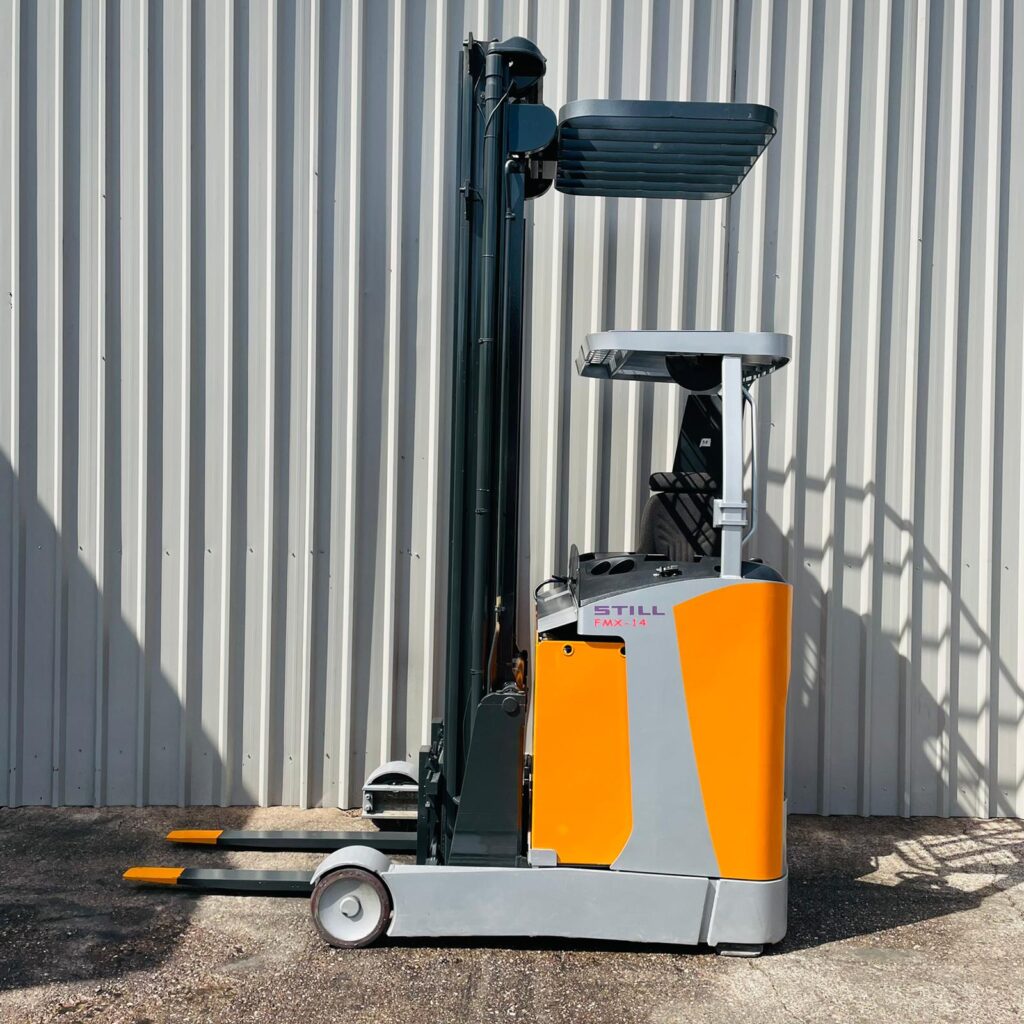
Quick Facts
- Primary Use: Stacks palletized goods in racking or picks palletized materials.
- Capacity: Handles loads from 2,500 to 5,500 lb.
- Training: Required by OSHA for all operators.
How They’re Used
Reach forklift trucks are designed for precise pallet picking within warehouse racks. They feature stabilized outrigger legs and forward-extending forks, allowing access to racks up to 30 ft high and items two pallets deep.
Load Size & Type
These trucks are used to stack and pick palletized goods, with capacities ranging from 2,500 to 5,500 lb. They are typically restricted to indoor use due to their lower undercarriage clearance.
Required Training
Operators must be certified to use reach forklift trucks, with training covering hands-on operation, inspections, and safety standards to comply with OSHA regulations.
Conclusion
Selecting the right lift truck for your warehouse involves understanding the specific benefits, capacity, reach height, and training requirements of each type. Proper training and certification ensure safe operation and compliance with OSHA regulations, ultimately enhancing the efficiency and safety of your warehouse operations.

